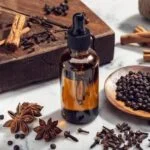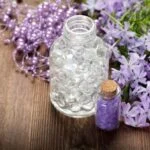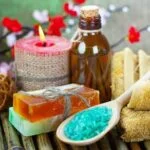In today’s fast-paced and stress-filled world, people are constantly seeking ways to improve their overall well-being. As a result, holistic wellness practices have been steadily gaining popularity, offering natural and alternative approaches to self-care. One such practice that has captured the attention of many is the aromatherapy massage. Combining the therapeutic benefits of essential oils with the soothing power of touch, aromatherapy massage offers a unique sensory experience that promotes relaxation, rejuvenation, and balance.
But what exactly is an aromatherapy massage? Imagine lying on a warm massage table enveloped in soft music and surrounded by calming scents.
As the experienced hands of a skilled masseuse glide over your body, they use a combination of gentle strokes and aromatic essential oils to ease tension, release muscle knots, and restore harmony to the mind and body. The art of this practice lies not only in harnessing the physical benefits but also in tapping into the power of scent – which has been scientifically proven to affect our moods, emotions, and overall well-being.
In this article series on “What’s an Aromatherapy Massage,” we will delve into this fascinating realm of holistic therapy. We will uncover its origins, explore its fundamental principles and techniques, unravel the science behind its effectiveness, and guide you through what to expect during a session.
Furthermore, we will examine the wide-ranging benefits it brings – from physical health improvements to mental clarity and emotional balance. Whether you are new to aromatherapy massage or seeking to deepen your understanding of this practice, this comprehensive guide will equip you with valuable knowledge to embrace this aromatic path towards wellness.
Unveiling the Essence of Aromatherapy
Defining Aromatherapy and Its Origins
Aromatherapy is a holistic wellness practice that involves the use of essential oils to promote physical, mental, and emotional well-being. The practice dates back thousands of years and has its roots in ancient civilizations such as Egypt, China, and Greece. These cultures recognized the power of scents in influencing mood, healing ailments, and enhancing overall health.
Essential oils used in aromatherapy are derived from various parts of plants such as leaves, flowers, bark, and roots. They are highly concentrated extracts that capture the plant’s aromatic compounds and therapeutic properties. Each essential oil has its own distinct scent and composition, which contributes to its unique benefits.
The Fundamental Principles and Techniques
At its core, aromatherapy is based on the belief that through inhaling or applying essential oils to the skin, the body can experience a range of positive effects. This is because the aromatic molecules of essential oils stimulate receptors in our olfactory system and may also be absorbed into the bloodstream.
In an aromatherapy massage session, a trained practitioner combines basic massage techniques with the use of specific essential oils chosen for their therapeutic properties. The massage itself focuses on relaxing muscles and relieving tension. The choice of essential oils depends on the individual’s needs and preferences but should always be guided by a professional who understands their properties and potential interactions.
Some common techniques used in aromatherapy massage include effleurage (long gliding strokes), petrissage (kneading), friction (firm circular motions), tapotement (light tapping or hacking), and vibration (gentle shaking or trembling). These techniques work together with the scents of essential oils to create a deeply relaxing experience that promotes both physical healing and emotional well-being.
As more individuals discover the numerous benefits of aromatherapy massage, this ancient healing practice continues to gain popularity, providing a natural and holistic approach to wellness.
The Science behind Aromatherapy Massage
Aromatherapy massage is not just a pleasant experience, but also an effective form of therapy for both the mind and body. The science behind aromatherapy massage lies in the impact that scents have on the human mind and body. When specific essential oils are used during a massage, they can stimulate certain parts of the brain and influence emotional and physical well-being.
Scents have a direct connection to our brains through the olfactory system. When we inhale certain aromas, they travel through our nasal passages and reach the olfactory receptors in our brain. These receptors then send signals to the limbic system, which is responsible for regulating emotions, memories, and physiological responses.
Essential oils used in aromatherapy massage contain chemical compounds that can trigger various physiological responses in the body. For example, lavender oil has been shown to have sedative effects, promoting relaxation and reducing anxiety levels. Peppermint oil, on the other hand, has invigorating properties that can help increase alertness and improve mental focus.
In addition to their effects on the mind, essential oils also have therapeutic effects on the body. Some oils have analgesic properties that can help alleviate pain and reduce inflammation. Others may improve blood circulation or boost immune function. The combination of these physiological responses with the calming effects on the mind makes aromatherapy massage a holistic approach to wellness.
| Study | Findings |
|---|---|
| A study published in 2014 | Found that peppermint oil improved memory retrieval and alertness in participants. |
| An analysis published in 2017 | Demonstrated that lavender oil had a calming effect on the nervous system, reducing anxiety and improving sleep quality. |
| A study published in 2018 | Indicated that rosemary essential oil helped to alleviate muscle pain and reduce inflammation in participants. |
By understanding the science behind aromatherapy massage, you can appreciate how this practice harnesses the power of scents to promote relaxation, reduce stress, and improve overall well-being. Whether you choose to experience an aromatherapy massage for physical relief or emotional rejuvenation, this holistic therapy offers a unique blend of sensory delight and therapeutic benefits.
Step-by-Step Guide
Aromatherapy massage is a unique and holistic practice that combines the therapeutic benefits of touch therapy with the healing properties of essential oils. In this section, we will break down the step-by-step process of experiencing an aromatherapy massage session and provide insights into the role of the masseuse and the use of specific essential oils.
- Choosing a Qualified Practitioner: It is essential to select a professional and qualified masseuse who specializes in aromatherapy massage. Look for certifications or credentials, and read reviews or testimonials from previous clients to ensure you are in expert hands. A skilled practitioner will have an in-depth understanding of different essential oils and their therapeutic properties, allowing them to tailor the massage session to your specific needs.
- Consultation: Before your massage session begins, most practitioners will conduct a brief consultation to assess your health history, current concerns, and any preferences you may have regarding scents or pressure. This serves as an opportunity for you to communicate your expectations and for the practitioner to determine which essential oils would be most suitable for you.
- Selection of Essential Oils: One of the defining aspects of aromatherapy massage is the use of essential oils. These highly concentrated plant extracts are chosen based on their healing properties and blended with carrier oils such as almond oil or jojoba oil before being applied to the body during the massage. The selection process may involve discussing your desired outcomes (e.g., relaxation, pain relief) and any potential allergies or sensitivities.
- Relaxation Techniques: The aromatherapy massage session typically starts with relaxation techniques such as deep breathing exercises or guided imagery to help calm the mind and prepare for a state of deep relaxation. The practitioner may also use gentle strokes or hand movements on specific areas like the back, neck, or feet to further induce relaxation.
- Application of Essential Oils: Once relaxed, the practitioner will apply a blend of selected essential oils onto the skin. The massage techniques used may vary, depending on your preferences and the desired outcome of the session. Some common techniques include effleurage (long, gliding strokes), petrissage (kneading and squeezing muscles), and friction (circular movements).
Throughout the massage session, the practitioner will use their expertise to adjust the pressure, speed, and intensity of the massage according to your comfort level. The main goal is to provide a deeply relaxing experience that promotes overall well-being.
,,,
| Step | Description |
|---|---|
| Choosing a Qualified Practitioner | Selecting a skilled masseuse with expertise in aromatherapy massage. |
| Consultation | A brief discussion with the practitioner to assess your needs and determine suitable essential oils. |
| Selection of Essential Oils | The practitioner selects specific essential oils based on your desired outcomes and any allergies or sensitivities. |
| Relaxation Techniques | The session begins with relaxation techniques like deep breathing exercises or gentle strokes to induce relaxation. |
| Application of Essential Oils | The selected essential oil blend is applied onto the skin using various massage techniques adjusted to your comfort level. |
Benefits of Aromatherapy Massage
Aromatherapy massage offers a wide range of benefits for both the body and mind. One of the primary physical advantages of this practice is pain relief. The combination of essential oils and massage techniques can help alleviate muscle soreness, joint pain, and headaches. Certain oils, such as lavender and chamomile, are known for their analgesic properties and can provide immediate relief.
In addition to pain relief, aromatherapy massage also improves blood circulation. When essential oils are applied to the skin during the massage, they penetrate into the bloodstream and promote blood flow throughout the body. This increase in circulation helps deliver oxygen and nutrients to the cells more efficiently, which can enhance overall health and vitality.
Aside from physical benefits, aromatherapy massage has significant mental and emotional advantages as well. One key benefit is stress reduction. The soothing scents of essential oils can trigger certain brain chemicals that promote relaxation and reduce anxiety. Aromatherapy massage creates a calming environment that allows individuals to unwind and let go of daily stressors.
Moreover, this holistic practice is highly beneficial for those struggling with sleep issues or insomnia. Essential oils like lavender and mandarin have sedative properties that can promote better sleep quality. By incorporating these oils into an aromatherapy massage session, individuals may experience improved relaxation, allowing them to fall asleep faster and enjoy a deeper sleep.
Overall, aromatherapy massage offers a comprehensive approach to wellness by addressing both physical ailments and mental well-being. Incorporating the therapeutic effects of essential oils with the power of touch through massage promotes balance in the body and mind, supporting overall health and vitality.
Addressing FAQs
Can anyone receive an aromatherapy massage?
One of the common questions that people have regarding aromatherapy massage is whether it is suitable for everyone. While aromatherapy massage can be beneficial for many individuals, there are certain circumstances in which it may not be recommended.
It is important to consult with a healthcare professional or qualified aromatherapist before receiving an aromatherapy massage, especially if you have any underlying medical conditions or are taking medications that could potentially interact with the essential oils used. Additionally, pregnant women, individuals with allergies or sensitivities to fragrance, and those who have recently undergone surgery may also need to exercise caution.
What can I expect during an aromatherapy massage session?
The experience of an aromatherapy massage session can vary depending on the practitioner and your specific needs. Generally, the session will begin with a consultation where you discuss your goals and preferences with the masseuse. They will then select appropriate essential oils based on your desired outcomes and any specific concerns you may have.
During the massage itself, you can expect a combination of gentle strokes, kneading, and acupressure techniques applied to different parts of your body. The therapist will incorporate the use of their hands as well as specific techniques using essential oils to enhance relaxation and therapeutic benefits. The massage session typically lasts around 60 to 90 minutes, allowing sufficient time for both physical and mental relaxation.
How long do the effects of an aromatherapy massage last?
The effects of an aromatherapy massage can vary from person to person and depend on factors such as individual response to essential oils, overall health condition, and lifestyle habits. Some individuals may experience immediate feelings of relaxation and improved mood that can last for several hours following the treatment session.
Others may notice longer-lasting benefits such as reduced muscle tension or relief from chronic pain that persist beyond just a few hours. However, it is important to note that the effects of aromatherapy massage are cumulative, and regular sessions can provide more sustained improvement in physical and mental well-being over time.
It is also worth mentioning that the benefits of an aromatherapy massage extend beyond just the immediate post-massage period. Many individuals report enhanced sleep quality, reduced stress levels, and increased overall sense of well-being in the days following a session. Therefore, incorporating aromatherapy massage as part of a personal wellness routine can help to maintain and build upon the positive effects experienced during a single session.
Types of Essential Oils for Aromatherapy Massage
Aromatherapy massage involves the use of essential oils to enhance the therapeutic benefits of the massage. These oils are derived from various plants and have unique characteristics and specific therapeutic properties. Here are some commonly used essential oils in aromatherapy massage:
- Lavender: Known for its calming and relaxing properties, lavender oil is often used to reduce stress, anxiety, and promote better sleep. It also has anti-inflammatory properties that can help soothe muscle pain.
- Peppermint: With a refreshing and invigorating scent, peppermint oil is commonly used for its cooling effect on the skin. It can alleviate muscle tension, headaches, and enhance mental clarity.
- Eucalyptus: Widely recognized for its decongestant properties, eucalyptus oil is excellent for respiratory conditions like colds and allergies. It can also relieve muscle soreness and uplift mood.
- Chamomile: Known for its soothing properties, chamomile oil is often used to promote relaxation and relieve anxiety. It can also aid in digestion and promote better sleep.
- Tea Tree: Renowned for its antimicrobial properties, tea tree oil is highly beneficial for treating skin conditions such as acne or fungal infections. It can also help boost the immune system.
- Rosemary: Stimulating and energizing, rosemary oil is often used to improve focus, memory, and concentration. It can also promote hair growth when applied topically.
- Ylang-Ylang: With a floral and sweet aroma, ylang-ylang oil is known as an aphrodisiac and mood enhancer. It can help reduce stress, anxiety, and promote feelings of joy.
It’s important to note that essential oils should be properly diluted before being applied to the skin during a massage session to ensure safety. Additionally, individuals with allergies or sensitivities should consult with a healthcare professional before using any essential oils. The type of oil used during an aromatherapy massage will depend on the specific needs and preferences of the individual receiving the treatment.
By incorporating these various essential oils into an aromatherapy massage, practitioners aim to create a holistic experience that not only relaxes the body but also uplifts the mind and spirit. Whether you’re seeking stress relief, pain management, or simply looking to enhance your overall well-being, the use of essential oils in aromatherapy massage can provide a truly transformative experience.
Precautions and Safety Measures
Aromatherapy massage is a holistic wellness practice that offers numerous benefits. However, it is important to take precautions and adhere to safety measures to ensure a safe and effective experience. Here are some key considerations to keep in mind before undergoing an aromatherapy massage:
- Consultation with a Professional: Before scheduling an aromatherapy massage, it is advisable to consult with a trained aromatherapist or a healthcare professional who specializes in complementary therapies. They can assess your health conditions, identify any potential risks or contraindications, and provide personalized guidance on the use of essential oils for your specific needs.
- Allergies and Sensitivities: Essential oils used in aromatherapy massage may cause allergic reactions or sensitivities in some individuals. It is crucial to inform the therapist about any known allergies or sensitivities you have before starting the session. They can then select suitable essential oils that do not pose a risk to your health.
- Quality of Essential Oils: Ensuring the quality of essential oils used during the massage is vital for both safety and effectiveness. Look for reputable brands that offer pure, therapeutic-grade essential oils. Synthetic or adulterated oils may not possess the desired therapeutic properties and could potentially cause adverse reactions.
- Skin Sensitivity and Irritation: Some essential oils may irritate sensitive skin or cause dermatitis-like symptoms in certain individuals. To avoid any skin-related issues, it is recommended to perform a patch test on a small area of skin before applying essential oils directly during the massage.
- Pregnancy and Medical Conditions: If you are pregnant, have underlying medical conditions, or are taking medication, it is crucial to seek guidance from your healthcare provider before undergoing aromatherapy massage. Certain essential oils may be contraindicated or require special precautions for these situations.
- Communication with Your Therapist: Effective communication with your therapist is key during an aromatherapy massage session. Inform them about any discomfort, pain, or unusual sensations you experience during the massage. This allows them to adjust their techniques and be mindful of your specific needs.
By adhering to these precautions and safety measures, you can enhance the overall safety and effectiveness of your aromatherapy massage experience. Remember that each person’s body reacts differently, so it is important to listen to your own body and consult with professionals whenever necessary.
Personal Experiences
Aromatherapy massage has gained popularity not only for its physical health benefits but also for its impact on mental and emotional well-being. Countless individuals have shared their personal experiences and success stories, highlighting the transformative effects of this holistic practice.
One common theme in the testimonials is the profound relaxation and stress relief that aromatherapy massage provides. Many individuals report feeling a deep sense of calmness and tranquility during the session, which has a lasting effect on their overall mental well-being. For those struggling with anxiety or high levels of stress, aromatherapy massage offers a natural solution to promote relaxation and restore balance.
Another commonly shared experience is the alleviation of physical pain and discomfort through aromatherapy massage. Essential oils used in this practice have therapeutic properties that can help reduce inflammation, ease muscle tension, and relieve headaches or migraines. Individuals suffering from chronic pain conditions have reported significant improvement in their symptoms after regular aromatherapy massage sessions.
Moreover, individuals who have undergone aromatherapy massage often report an enhanced mood and improved emotional state. The scents of essential oils used during the session can stimulate the release of certain neurotransmitters in the brain, such as serotonin and endorphins, which are known to elevate mood and promote feelings of happiness and well-being.
These personal experiences serve as encouraging testaments to the effectiveness of aromatherapy massage in enhancing both physical and emotional wellness. By incorporating this holistic practice into their self-care routines, individuals may discover a wealth of benefits that contribute to their overall quality of life.
Conclusion
In conclusion, aromatherapy massage offers a holistic approach to wellness that addresses both the physical and emotional aspects of our well-being. Through the use of essential oils and specific massage techniques, this practice has proven to provide numerous benefits for individuals seeking relaxation, pain relief, stress reduction, and improved overall health.
Throughout this article, we have explored the origin and principles of aromatherapy massage, delving into the science behind its therapeutic effects. We have uncovered how scents can impact our mind and body, as well as how essential oils contribute to the overall effectiveness of this practice.
Furthermore, we have provided readers with a step-by-step guide on experiencing an aromatherapy massage session. From choosing the right essential oils to understanding the role of the masseuse, these insights help individuals make informed decisions when embarking on their own aromatic journey.
It is crucial to note that while aromatherapy massage offers a plethora of benefits, precautions and safety measures should be considered. Readers are advised to choose reliable practitioners and be aware of any potential risks or contraindications associated with this practice.
By embracing the aromatic path to wellness through aromatherapy massage, individuals have the opportunity to enhance their quality of life physically, mentally, and emotionally. Whether seeking relief from chronic pain or simply desiring some relaxation in a fast-paced world, aromatherapy massage provides a natural and effective solution towards achieving overall well-being. So why not embark on your own journey today? Embrace the power of scent and experience firsthand the transformative effects it can bring to your life.
Frequently Asked Questions
What does aromatherapy massage do?
Aromatherapy massage is a type of massage that combines traditional massage techniques with the use of essential oils. It aims to promote relaxation, improve overall well-being, and address specific physical or emotional concerns.
The essential oils used in aromatherapy are derived from plants and have various therapeutic properties. During an aromatherapy massage, these essential oils are applied topically to the body through the massage strokes, allowing their aromas to be inhaled and absorbed into the bloodstream.
What is the difference between a normal massage and an aromatherapy massage?
The main difference between a normal massage and an aromatherapy massage lies in the addition of essential oils. While a normal massage focuses primarily on manipulating the soft tissues of the body to relieve tension, reduce muscle pain, and improve circulation, an aromatherapy massage incorporates the therapeutic benefits of essential oils.
These oils not only enhance the relaxation and stress-relieving effects of the massage but also provide additional benefits such as soothing sore muscles, alleviating anxiety or depression, improving sleep quality, boosting immune function, or reducing inflammation.
What to expect during an aromatherapy massage?
During an aromatherapy massage session, you can expect a similar experience to a regular massage but with added sensory stimulation from the essential oils. The practitioner will begin by discussing your health history, preferences, and any specific issues or goals you may have for the session.
You will then be asked to undress (usually leaving underwear on) and lie comfortably on a massage table while maintaining your privacy with a sheet or towel.

Are you looking for a natural way to improve your health and wellbeing?
If so, aromatherapy may be the answer for you.





